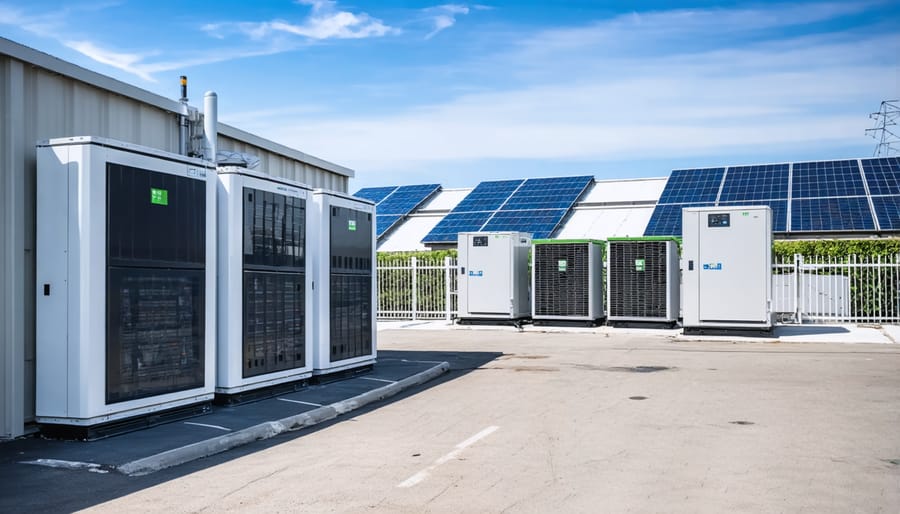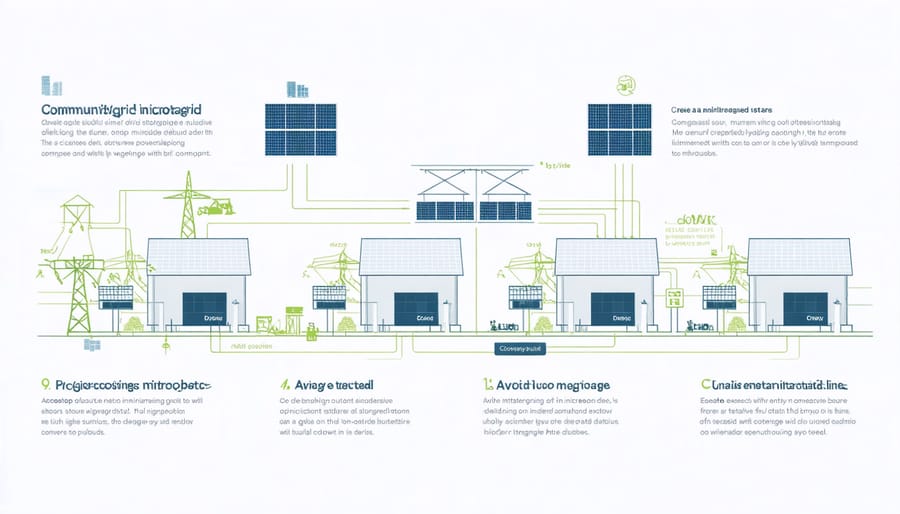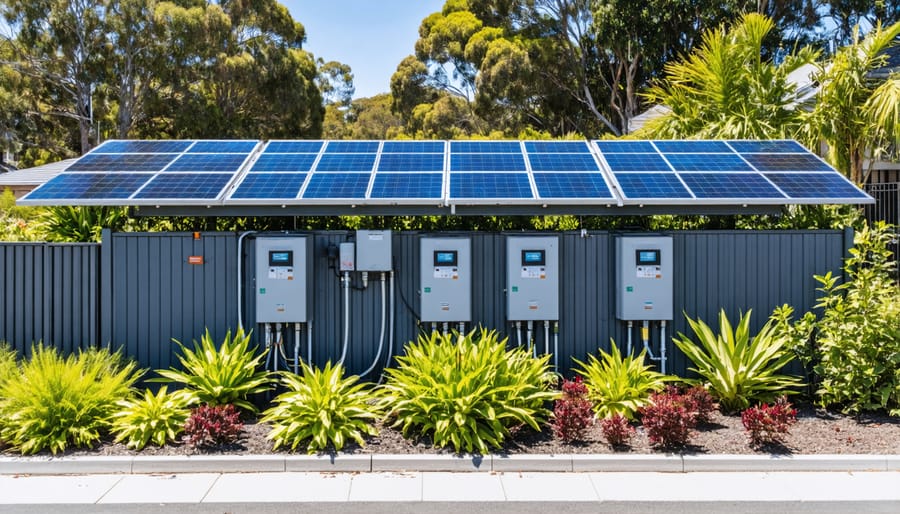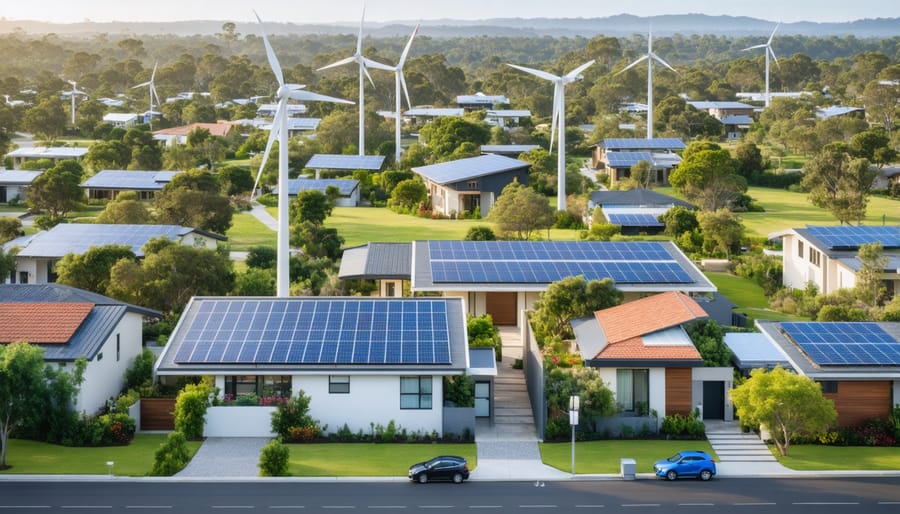Energy storage integrators are revolutionizing Australia’s renewable energy landscape, bridging the critical gap between intermittent power generation and reliable energy access. As communities increasingly embrace community solar bank initiatives and sustainable power solutions, these specialized firms are emerging as essential partners in the clean energy transition. By seamlessly connecting solar arrays, wind farms, and battery systems with existing grid infrastructure, energy storage integrators enable communities to maximize their renewable investments while ensuring consistent power delivery.
These technical orchestrators work behind the scenes to transform fragmented energy components into cohesive, intelligent systems that respond dynamically to demand fluctuations. Their expertise spans hardware installation, software optimization, and grid compliance – creating resilient energy networks that can power everything from remote outback communities to bustling urban centers. As Australia accelerates towards its renewable energy targets, energy storage integrators are proving instrumental in turning ambitious sustainability goals into practical, working solutions that benefit both the environment and local communities.
This innovative approach to energy management represents more than just technological advancement; it’s a fundamental shift in how we think about power distribution and community energy independence. The result is a more democratic, sustainable, and reliable energy future for all Australians.
What Are Energy Storage Integrators?

Key Roles and Responsibilities
Energy storage integrators play a pivotal role in bridging the gap between renewable energy generation and efficient power utilisation. Their primary responsibility involves designing and implementing comprehensive energy storage solutions that seamlessly connect various power sources, storage systems, and end-users.
These specialists assess site requirements, energy consumption patterns, and local grid conditions to develop tailored storage solutions. They’re responsible for selecting appropriate battery technologies, sizing storage systems, and ensuring optimal integration with existing infrastructure. A crucial aspect of their work involves implementing sophisticated control systems that manage power flow, monitor system performance, and maintain battery health.
Energy storage integrators also handle project management, from initial feasibility studies through to commissioning and maintenance. They coordinate with stakeholders including utilities, manufacturers, and local councils to ensure compliance with Australian standards and regulations. Additionally, they provide training and support to facility operators, ensuring smooth day-to-day operations.
Most importantly, these professionals help optimise energy costs by developing strategies for peak shaving, load shifting, and maximising self-consumption of renewable energy. They’re essential in creating resilient power systems that support Australia’s transition to clean energy.
Technical and Social Skills Required
Success as an energy storage integrator requires a unique blend of technical expertise and interpersonal skills. On the technical side, professionals need a strong foundation in electrical engineering, with specific knowledge of battery systems, inverter technologies, and grid integration principles. Understanding renewable energy systems, particularly solar and wind power, is crucial for designing effective storage solutions.
Digital literacy is essential, as integrators must work with sophisticated monitoring systems and control software. Proficiency in energy management systems and data analysis helps optimize storage performance and identify potential issues before they become problems.
Strong project management abilities are vital, as integrators often coordinate multiple stakeholders, from manufacturers to installers and utility companies. Communication skills are equally important – they must explain complex technical concepts to clients, work effectively with installation teams, and liaise with local authorities regarding compliance requirements.
Problem-solving and adaptability are key attributes, as each project presents unique challenges. Knowledge of Australian energy regulations and standards is non-negotiable, while staying current with emerging storage technologies ensures delivery of cutting-edge solutions.
Experience with safety protocols and risk management rounds out the technical requirements, while networking abilities help build valuable industry connections.
Community Benefits of Energy Storage Integration

Energy Independence and Reliability
Integrated energy storage solutions are revolutionizing how Australian communities approach energy independence and security. By combining renewable energy generation with sophisticated storage systems, communities are creating resilient microgrids that can operate independently when needed. These systems are particularly valuable in remote areas where grid reliability might be compromised during extreme weather events or bushfire seasons.
A well-designed storage integration strategy enables community renewable energy projects to maintain consistent power supply even when solar or wind generation fluctuates. For instance, the Byron Bay Industrial Estate demonstrated this capability during the 2022 floods, when its integrated storage system kept essential businesses operational despite grid outages.
Storage integrators play a crucial role in designing these systems to match community needs. They assess local energy patterns, calculate optimal storage capacity, and implement smart control systems that automatically manage power flow. This expertise ensures communities can maintain critical services during emergencies while reducing dependency on external power sources.
The benefits extend beyond emergency preparedness. Communities with integrated storage solutions often see reduced energy costs and greater control over their power usage. Many regional towns are now using these systems to support local businesses, create energy trading opportunities between neighbors, and build more sustainable, self-reliant communities for the future.
Cost Savings and Economic Benefits
Communities investing in integrated energy storage systems are discovering significant financial benefits that extend well beyond initial cost savings. By implementing local power storage solutions, neighbourhoods can reduce their electricity bills by up to 30-40% through peak load shifting and demand management.
The economic advantages are particularly compelling for rural Australian communities, where traditional grid infrastructure costs are typically higher. Storage integrators help these communities maximize their renewable energy investments by storing excess power during sunny or windy periods and using it during peak demand times, effectively reducing reliance on expensive grid electricity.
Beyond direct energy savings, integrated storage systems create local job opportunities in installation, maintenance, and system management. Communities can also generate revenue by participating in demand response programs, where excess stored energy is sold back to the grid during high-demand periods.
Real-world examples demonstrate these benefits clearly. The township of Yackandandah in Victoria achieved remarkable cost reductions through their community battery system, with participating households saving an average of $1,200 annually on energy bills. Additionally, businesses within these communities often experience enhanced energy security, reducing costly downtime during grid outages.
The long-term financial benefits extend to property values, with homes in areas featuring integrated storage solutions typically commanding higher market prices due to their improved energy infrastructure and lower operating costs.

Success Stories: Australian Communities Leading the Way
Across Australia, innovative communities are demonstrating the transformative power of integrated energy storage solutions. Among the standout Australian community energy initiatives, the Yackandandah mini-grid project in Victoria stands as a shining example of what’s possible when communities take charge of their energy future.
The Totally Renewable Yackandandah (TRY) initiative has successfully integrated battery storage systems across multiple households, creating a networked community battery system that’s revolutionizing local power management. By combining rooftop solar with strategic battery placement, the community has achieved over 60% renewable energy penetration, setting a new benchmark for regional energy independence.
In South Australia, the Salisbury Community Battery project demonstrates how urban communities can benefit from shared storage solutions. This 30kWh battery system serves over 200 households, helping residents reduce their energy bills while stabilizing the local grid during peak demand periods. The project has cut electricity costs by up to 30% for participating households while providing valuable grid services to the broader network.
The Byron Bay Solar Revolution stands out for its innovative approach to commercial and residential integration. Local businesses and households collaborated to create a distributed storage network that maximizes solar uptake and minimizes grid dependency. The project’s smart management system ensures optimal energy flow between participants, resulting in a 45% reduction in peak demand charges for commercial users.
These success stories share common elements: strong community engagement, strategic partnerships with technology providers, and careful consideration of local needs. The Sustainable Upper Hunter initiative, for instance, combined agricultural waste processing with battery storage, creating a circular economy approach to energy management that’s particularly relevant for rural communities.
What makes these projects truly remarkable is their ripple effect. They’ve inspired neighboring communities to launch similar initiatives, creating a growing network of energy-smart townships across the country. These pioneering projects prove that community-scale energy storage isn’t just environmentally sound – it’s economically viable and socially transformative.
Integrating Bioenergy with Storage Solutions
Bioenergy systems and storage solutions are proving to be a match made in heaven for Australian communities seeking reliable, renewable energy solutions. By combining these technologies, communities can maximize the value of their organic waste while ensuring a consistent power supply throughout the day and night.
The integration process typically involves converting organic waste materials, such as agricultural residues, food waste, and green waste, into biogas through anaerobic digestion. This biogas can then be stored and used on-demand, either for direct power generation or after being upgraded to biomethane. When paired with battery storage systems, this creates a robust and flexible energy solution that can respond to community needs in real-time.
One standout example is the Berrybank Farm Bioenergy Facility in Victoria, where dairy farm waste is converted into biogas and stored for consistent power generation. The facility not only powers the farm but also supplies excess energy to nearby communities, demonstrating the practical benefits of integrated bioenergy storage.
The key advantages of this integration include:
– Waste reduction and resource recovery
– Stable baseload power generation
– Enhanced grid reliability
– Reduced energy costs for communities
– Lower greenhouse gas emissions
Storage solutions play a crucial role by managing the intermittent nature of biogas production. Advanced storage systems can balance supply and demand, storing excess energy during low-demand periods and releasing it during peak times. This capability is particularly valuable in rural and regional areas where grid connectivity might be limited.
Looking ahead, the integration of bioenergy with storage solutions represents a growing opportunity for Australian communities. Many regional towns are already exploring hybrid systems that combine bioenergy storage with other renewable technologies, creating resilient and sustainable local energy networks that support both agricultural and residential needs.
The success of these integrated systems often depends on community engagement and local partnerships. When communities actively participate in the collection and sorting of organic waste, the entire system becomes more efficient and cost-effective, creating a truly circular economy approach to energy generation and storage.
As we look to Australia’s energy future, energy storage integrators stand as crucial players in our transition to a sustainable power landscape. Their role in bridging the gap between renewable energy generation and reliable power delivery has proven instrumental in transforming how communities access and utilize clean energy.
The success stories across Australia, from remote outback communities to urban developments, demonstrate the transformative impact of well-integrated energy storage solutions. These integrators have shown that with proper planning and implementation, renewable energy can be both reliable and cost-effective, challenging the traditional notion that sustainable power comes at the expense of dependability.
Looking ahead, the role of energy storage integrators will only grow in importance. As Australia continues to lead the way in renewable energy adoption, these specialists will be essential in developing more sophisticated and efficient storage solutions. The integration of artificial intelligence and smart grid technologies promises to further enhance their capabilities, enabling more dynamic and responsive energy management systems.
The future outlook is particularly promising for rural and remote communities, where energy storage integrators are helping to establish energy independence and resilience. Their work not only supports Australia’s renewable energy targets but also creates new opportunities for economic growth and community development.
For businesses and communities considering the transition to renewable energy, partnering with experienced energy storage integrators has become not just an option, but a strategic necessity. Their expertise in creating customized, efficient, and reliable energy solutions will continue to drive Australia’s clean energy revolution, making sustainable power accessible to all while ensuring a greener future for generations to come.

